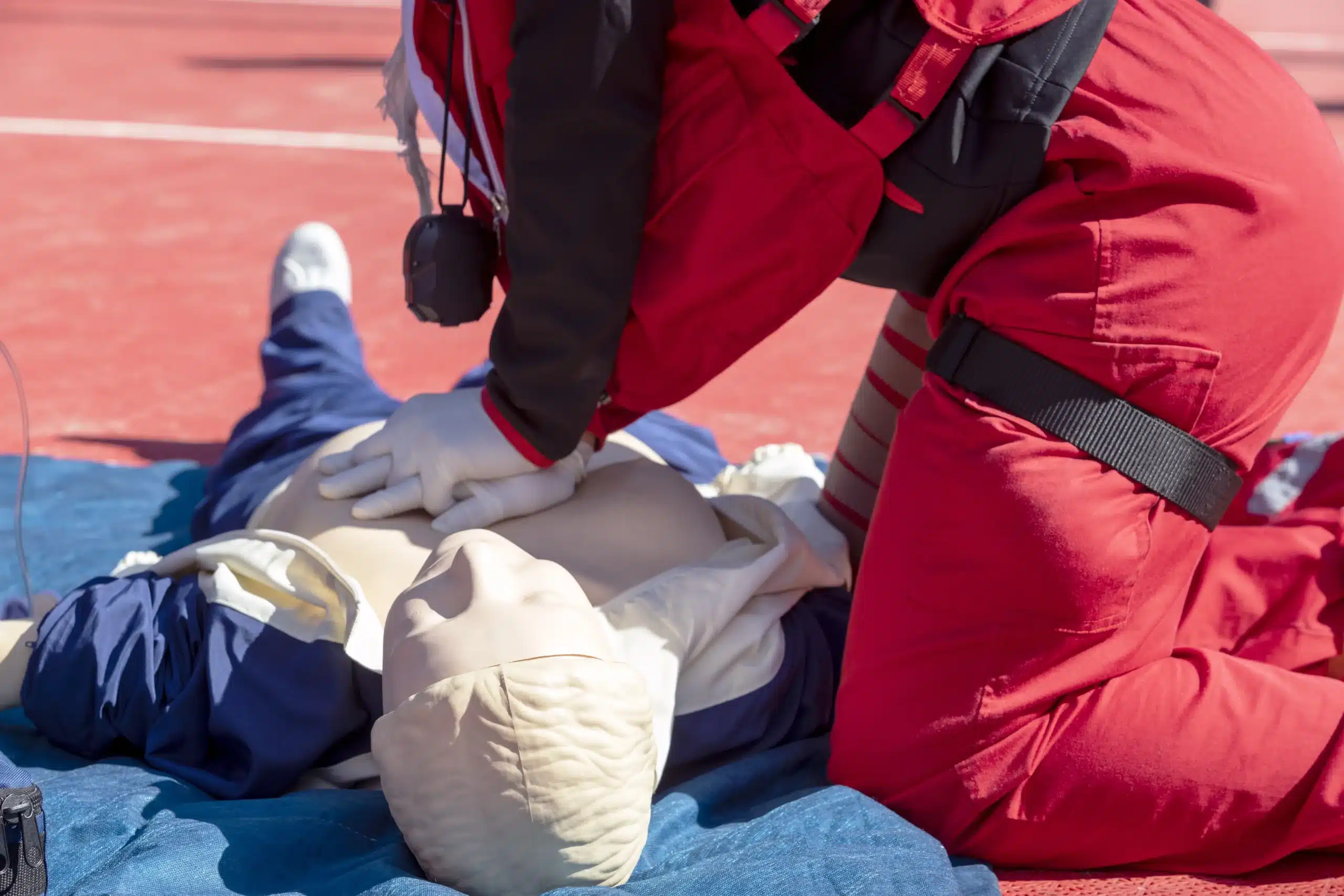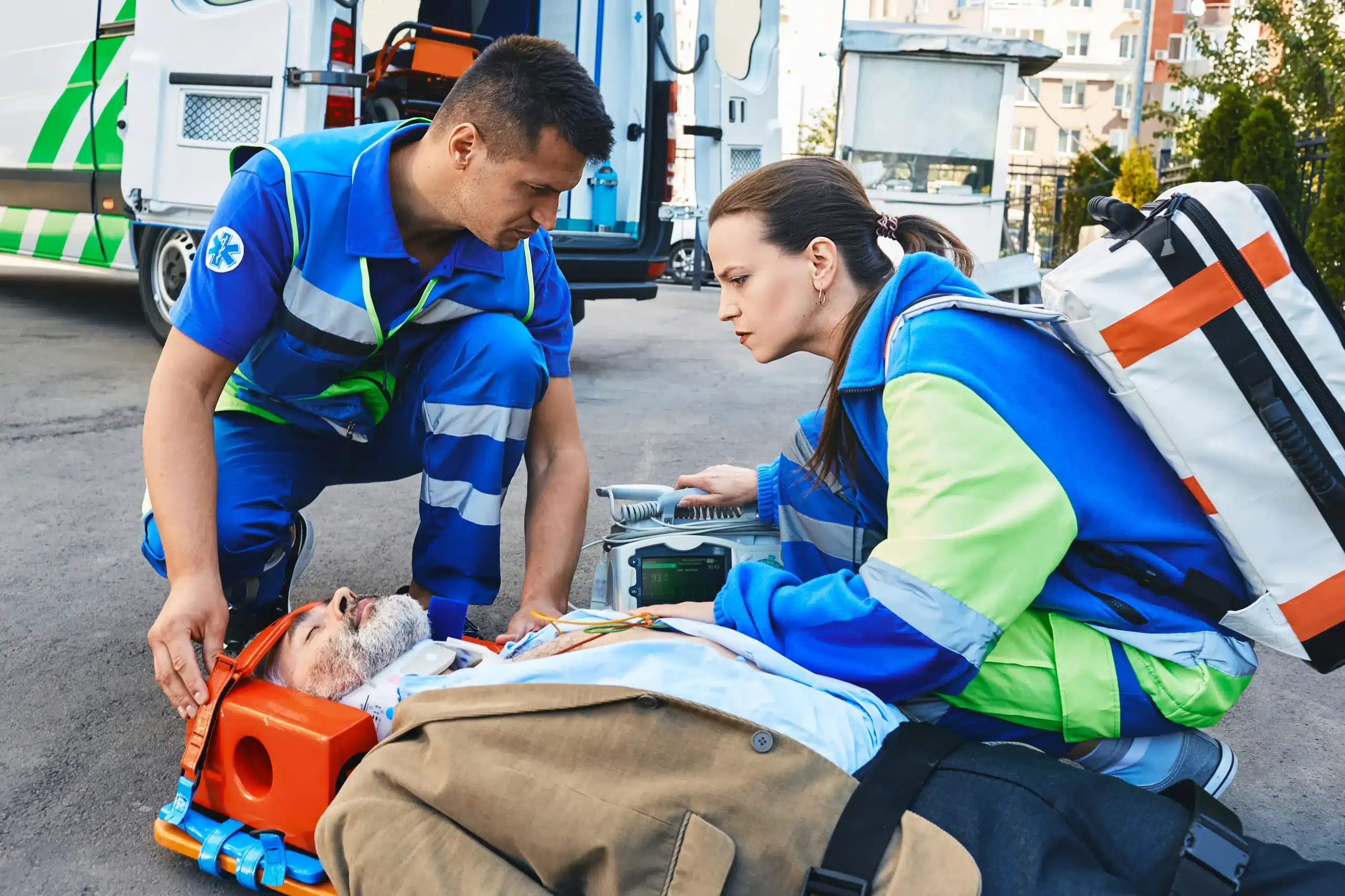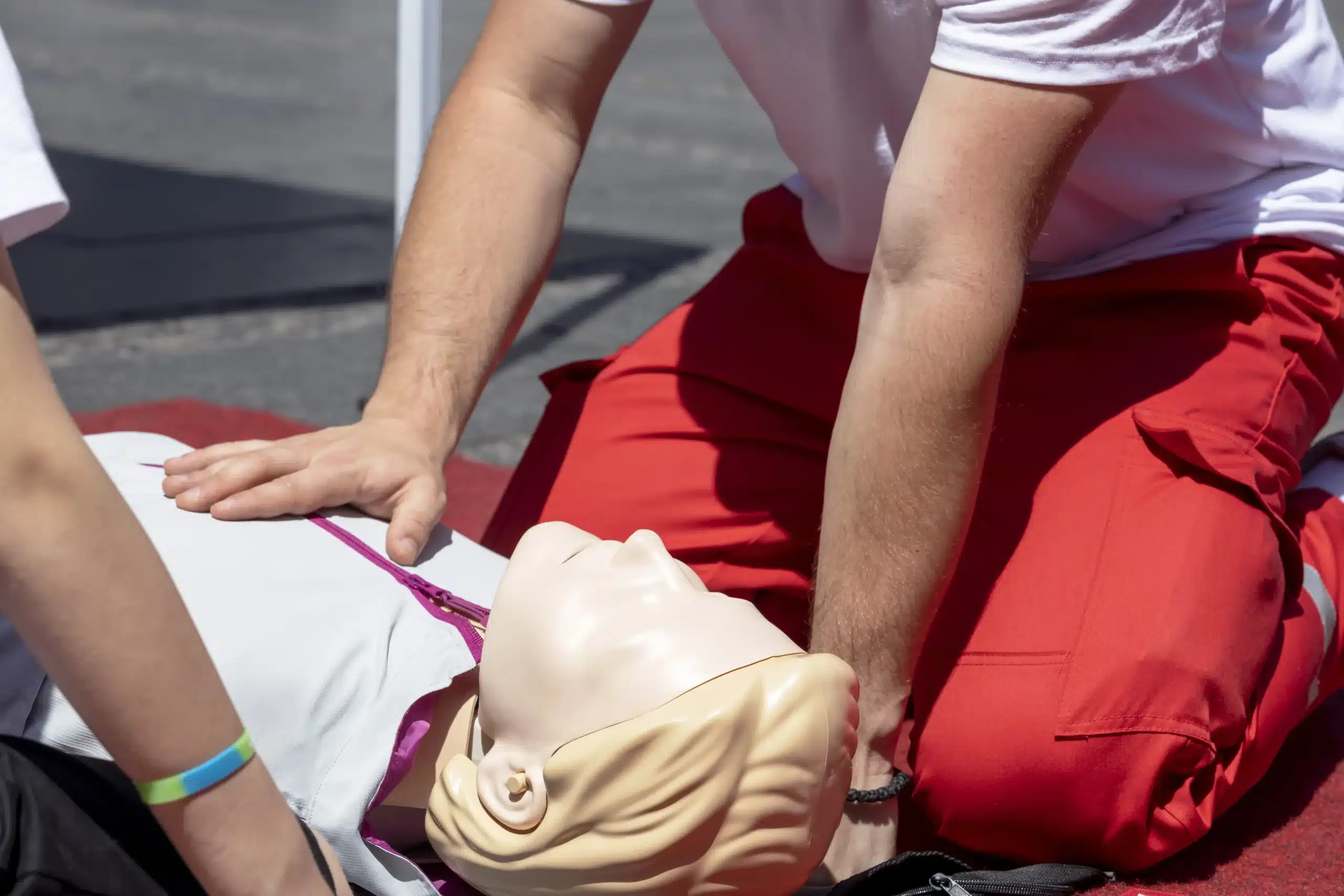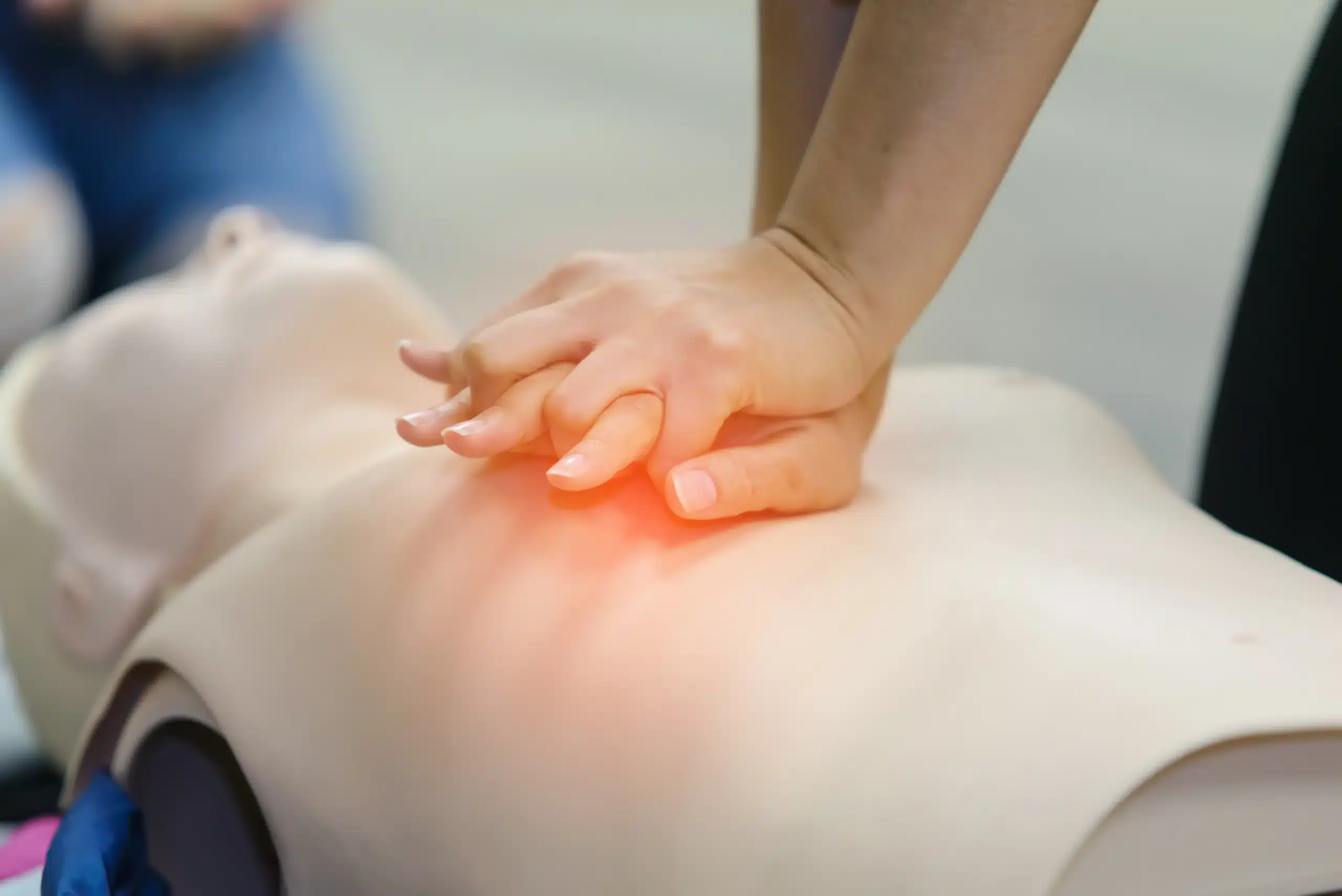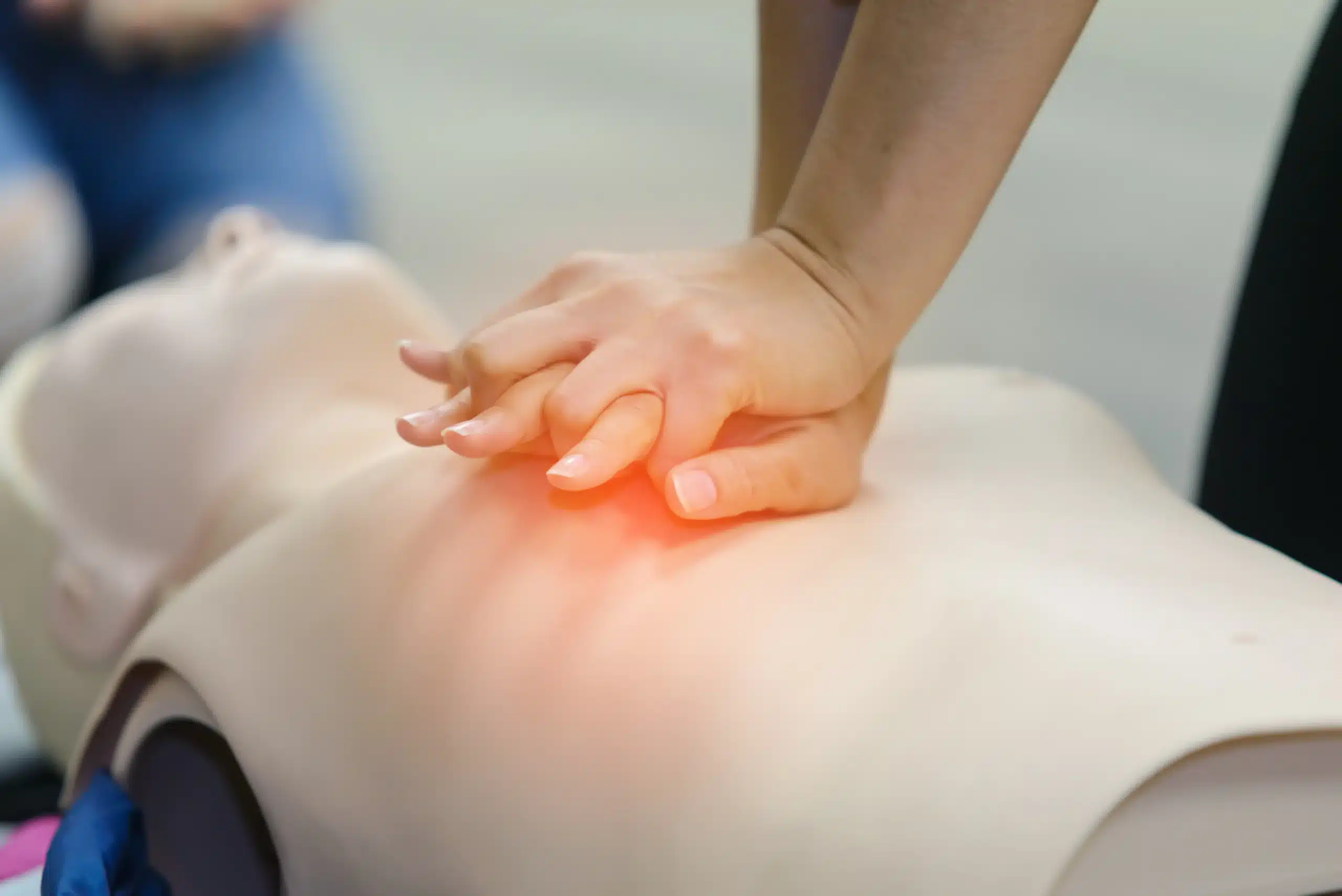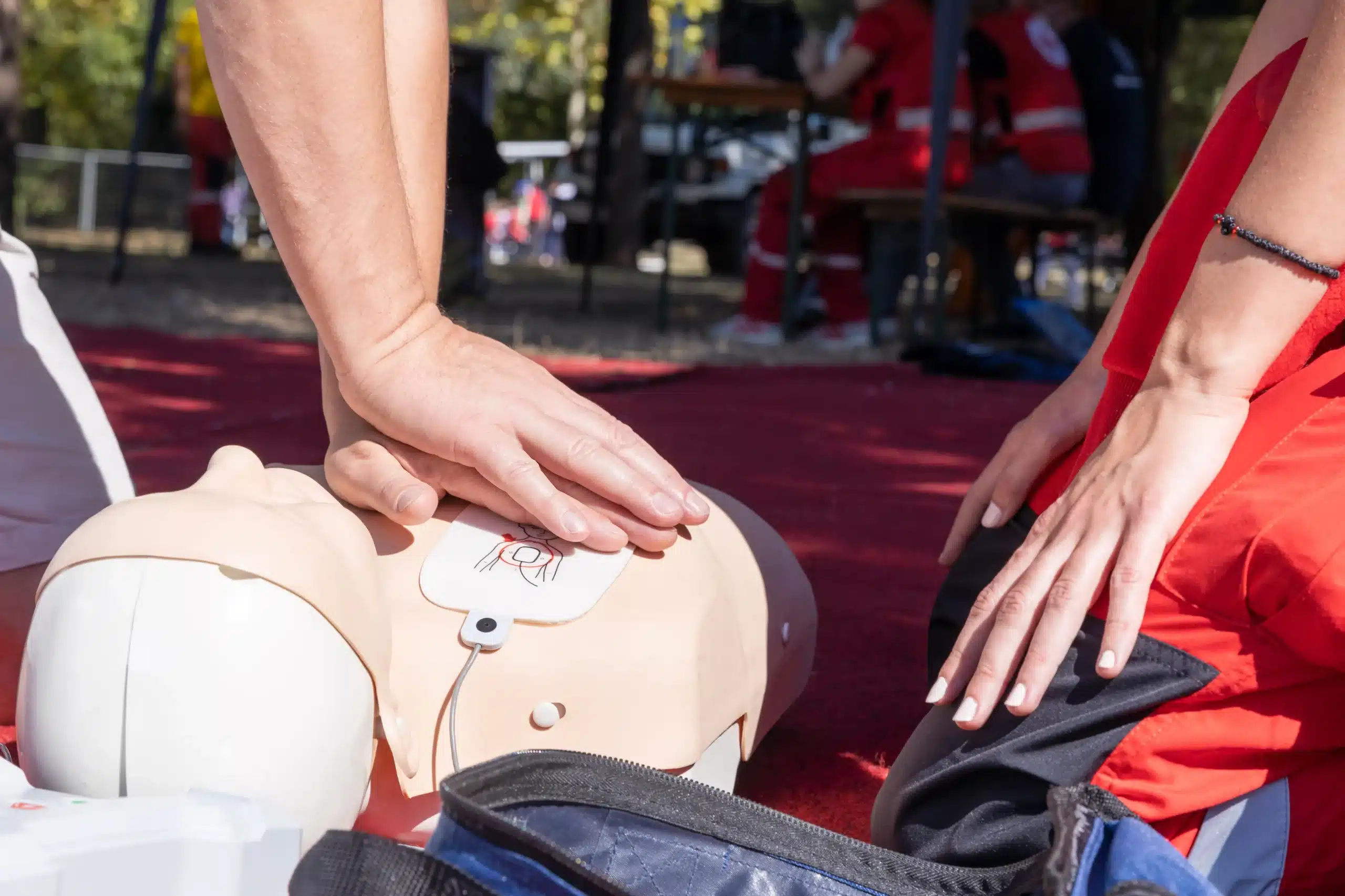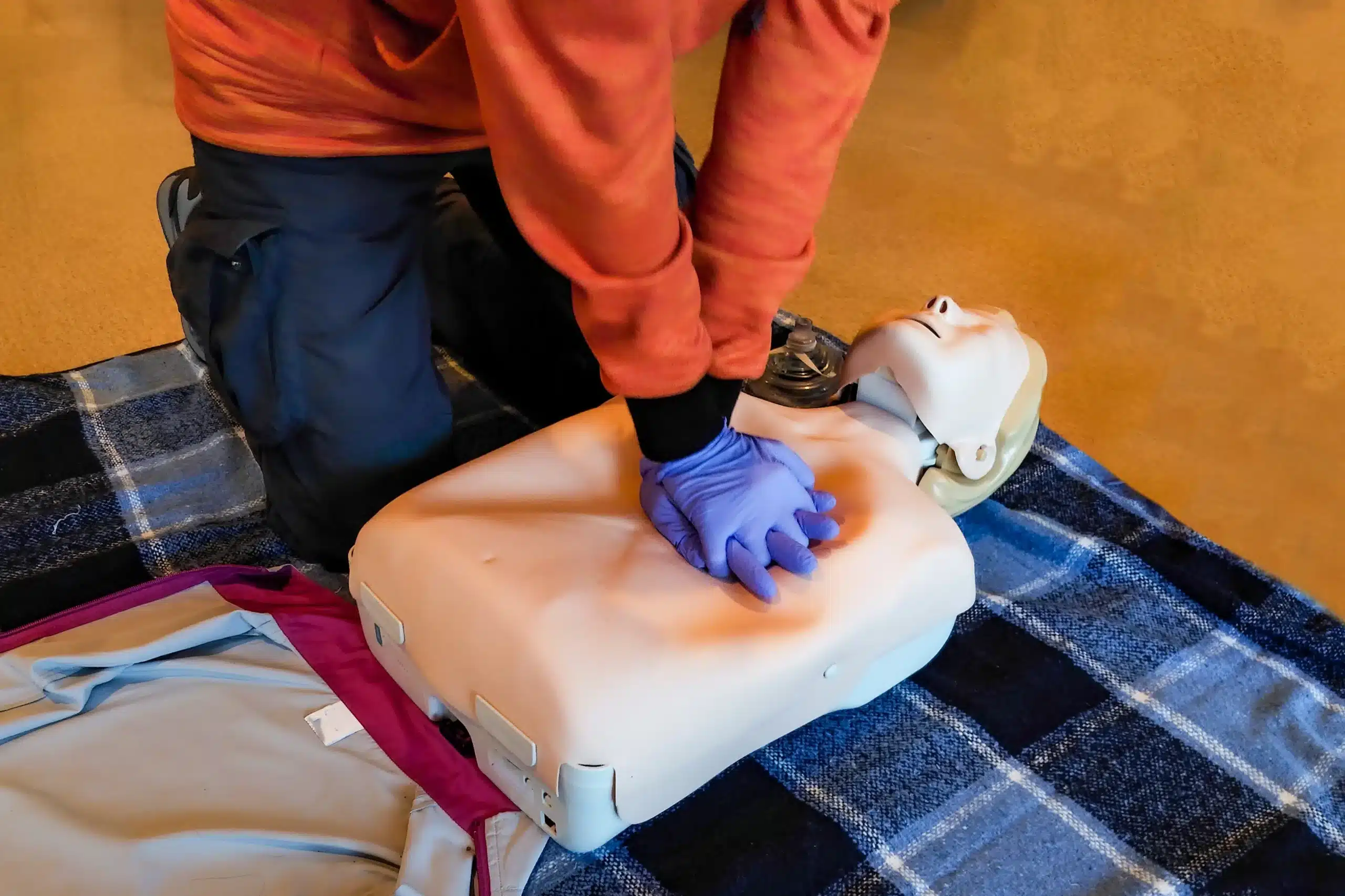Life is unpredictable, and medical emergencies can arise when we least expect them. Having the skills to respond confidently and effectively can make a world of difference. Basic Life Support (BLS) training provides the foundation for providing immediate care in these critical situations. This guide will take you through the essentials of BLS certification, from understanding its importance to finding the right BLS classes near me. We’ll explore the various aspects of BLS training, including the skills you’ll learn, the certification process, and how to choose a training program that fits your lifestyle. Let’s empower you to be a lifeline in times of need.
Key Takeaways
- BLS skills are essential, not just for healthcare professionals: These life-saving techniques can be applied anywhere, from the workplace to your home, empowering you to respond effectively in emergencies.
- Select a recognized training provider: Look for accreditation, compare costs, and check reviews to ensure you’re receiving quality instruction that aligns with current guidelines. Consider in-person or online options based on your learning style.
- Stay current with your BLS skills: Regularly practicing your skills and staying updated on the latest techniques will maintain your proficiency and confidence in responding to emergencies.
What is BLS?
Basic Life Support (BLS) certification is a vital credential for healthcare professionals and anyone who wants to be prepared for a medical emergency. It equips you with the skills to respond effectively to life-threatening situations, including cardiac arrest, respiratory distress, and choking. There are many misconceptions about BLS, so let’s clear those up. BLS focuses on providing immediate care until advanced medical personnel arrive. It emphasizes early recognition and intervention, which can significantly improve a person’s chances of survival. Think of it as the foundation of emergency medical care, providing essential support in those critical first few minutes. For a deeper understanding of common misconceptions surrounding BLS certification, check out this helpful article.
What BLS involves
BLS training covers essential lifesaving skills. You’ll learn how to perform high-quality CPR for adults, children, and infants, including chest compressions and rescue breaths. The training also includes the proper use of an automated external defibrillator (AED) and techniques for relieving choking. BLS certification training emphasizes the importance of teamwork and clear communication in emergency situations, ensuring everyone involved can work together effectively. You’ll practice these skills in a controlled environment, building your confidence and preparing you to respond calmly and efficiently in a real emergency.
Who needs BLS?
While often associated with healthcare providers, BLS skills are valuable for anyone. Whether you’re a medical professional, a teacher, a parent, or simply someone who wants to be prepared, BLS training can empower you to make a difference in a critical situation. These skills can be applied in various settings, from the workplace to the home, giving you the confidence to act quickly and effectively when every second counts. If you’re in the Palo Alto area, including Redwood City and Menlo Park, consider checking out the courses offered by Palo Alto CPR Classes. They offer a range of courses, including BLS, ACLS, and RQI, and even have discounts for group classes. They also have a low price guarantee.
Find Local BLS Classes
Finding the right BLS class is easier than you think. Whether you’re a healthcare provider or just want to be prepared for emergencies, there are options near you. Palo Alto CPR Classes serves Palo Alto, Redwood City, and Menlo Park, offering convenient daily classes.
BLS for Healthcare Providers
If you work in healthcare, BLS certification is likely mandatory. It’s essential for doctors, nurses, paramedics, and other medical professionals. These BLS courses cover adult, child, and infant CPR, using an AED, and relieving choking. Look for classes designed for healthcare providers, as they often include advanced skills and meet workplace requirements. Palo Alto CPR Classes offers American Heart Association BLS certification through the RQI program.
BLS for Everyone Else
BLS certification isn’t just for medical professionals. It’s valuable for anyone who wants to be prepared for an emergency. Teachers, coaches, parents, and caregivers can all benefit from knowing BLS. Even if you don’t work in healthcare, these skills can make a difference in a critical situation. Check with local community centers, fire departments, or organizations like the American Red Cross for BLS classes near you. Group discounts are often available at Palo Alto CPR Classes.
Renewing Your BLS
BLS certifications typically expire every two years. Staying current is crucial, especially for healthcare providers. Look for renewal courses from reputable organizations like the American Heart Association or the American Red Cross. Many providers offer streamlined recertification courses. Make sure to renew before expiration to maintain your qualifications. RQI classes from Palo Alto CPR Classes provide a convenient way to renew your BLS certification. Our low price guarantee ensures you’re getting quality training at an affordable price.
Find Reputable BLS Classes
Finding the right BLS class involves a bit of research to ensure you’re getting high-quality training that meets industry standards. Here’s what to consider:
Look for Accredited Organizations
First things first, confirm the organization offering the BLS certification is accredited by a recognized body like the American Heart Association (AHA). An AHA-approved certification is often a requirement for many healthcare employers, as it signifies the training aligns with established guidelines. This ensures you’re learning the most up-to-date and effective life-saving techniques. For example, all courses offered by Palo Alto CPR Classes are AHA-certified through the RQI program, so you can trust the quality of their training.
Online vs. In-Person BLS
Next, think about whether you prefer online or in-person classes. Both have their advantages. Online BLS certification offers flexibility, allowing you to learn at your own pace and fit the training around your busy schedule. Many online courses also provide support from instructors. In-person classes offer a hands-on learning environment with real-time feedback from instructors and the opportunity to practice skills with other students. Consider your learning style and availability when making your decision. If you prefer the dynamic of a classroom setting and live in the Palo Alto area, check out the daily BLS classes offered by Safety Training Seminars. They serve Palo Alto, Redwood City, and Menlo Park.
Check Reviews and Credentials
Finally, before signing up, take a few minutes to check reviews and credentials. Reading reviews from past students can give you valuable insights into the quality of instruction, course materials, and overall learning experience. Look for comments about the instructors’ expertise and the effectiveness of the training. Also, confirm the instructors’ credentials to ensure they are qualified and experienced in providing BLS instruction. Don’t hesitate to ask the training provider about their instructors’ backgrounds and experience. A reputable provider will be happy to share this information. If you’re looking for affordable options, Palo Alto CPR Classes offers a low price guarantee, ensuring you get quality training without breaking the bank. They also offer discounts for group classes, which can be a great option for workplaces or groups of friends.
What Happens in a BLS Class?
So, you’ve signed up for a BLS class—congratulations! Now, you’re probably wondering what to expect. A BLS course equips you with essential skills to respond to life-threatening emergencies. Let’s break down what a typical BLS certification course entails.
Class Length and Format
BLS courses are designed to be efficient and comprehensive, typically taking between two and four hours to complete. The American Heart Association (AHA) offers BLS courses in various formats, including initial certification, re-certification, and convenient online options, allowing you to learn at your own pace. Some courses blend online learning with in-person skills sessions for added flexibility. Safety Training Seminars offers a comprehensive BLS certification course covering essential lifesaving skills.
Skills You’ll Learn
In a BLS class, you’ll gain practical skills and knowledge to handle a range of emergency situations. You’ll learn how to perform high-quality CPR for adults, children, and infants, including how to use an automated external defibrillator (AED). The curriculum covers basic airway management techniques and how to help someone who is choking. Many courses include hands-on training and focus on critical thinking and teamwork, preparing you to confidently respond in real-life scenarios.
Practice and Assessment
BLS classes emphasize hands-on practice to build muscle memory and confidence. You’ll work with real equipment, giving you a chance to get comfortable with the tools and techniques. Expect personalized feedback from instructors as you refine your skills. Many AHA BLS certification courses require both an online component and an in-person skills assessment, ensuring you meet the required standards. This practical approach, combined with personalized feedback, ensures you’re well-prepared to use your BLS skills effectively. You’ll practice on mannequins in a safe and controlled environment, giving you the opportunity to apply what you’ve learned.
How Much Does BLS Certification Cost?
One of the most common questions about BLS certification is the cost. It’s an important factor when choosing a course, but remember that quality instruction and a recognized certification are key.
Typical Prices
BLS certification costs vary depending on the training provider, location, and course format (online, in-person, or blended learning). In Palo Alto, for example, in-person BLS classes typically start around $55 at Safety Training Seminars. A blended learning course, like the BLS Provider Heartcode course (which includes online learning and in-person skills testing), might cost a bit more, around $120. For those seeking the best value, consider our low price guarantee. You’ll find similar price ranges with other providers, and the American Heart Association often lists comparable pricing for initial certification and recertification.
Payment Options
Most BLS course providers offer various payment options. These typically include credit and debit cards, and sometimes PayPal or other digital payment methods. If you’re taking a class through your employer or a large organization, they may have internal payment processes or offer reimbursement. For in-person classes, it’s always a good idea to confirm payment options with the provider beforehand.
Discounts
Finding ways to save on BLS certification is always helpful. Look for discounts offered by training centers, especially for group registrations. Safety Training Seminars offers discounts for group classes, which can be a smart choice for workplaces or groups of friends. Professional organizations or employers may also have partnerships with training providers, offering discounted rates. Keep an eye out for seasonal promotions or special offers, too. While some organizations offer discounts on training materials, the best savings usually apply directly to course fees. Comparing prices and checking for discounts from different providers is always recommended.
Prepare for Your BLS Class
Getting ready for your BLS class doesn’t require extensive preparation, but a little planning goes a long way. Knowing what to expect and having a few essentials beforehand can help you focus on learning these lifesaving skills.
What You Need
Before signing up for a BLS class, it’s helpful to understand the basics. BLS training is beneficial for anyone who wants to learn how to respond to medical emergencies. This foundational knowledge is crucial for feeling confident going into your training. It’s helpful to familiarize yourself with BLS and its importance, so you can actively participate and ask informed questions during the course.
What to Bring
While your BLS course will cover everything you need to know, check with your training provider about any specific materials you might need. Some providers, like Palo Alto CPR Classes, might suggest a notebook and pen for taking notes. Comfortable clothing is also a good idea for the hands-on portions of the class.
Get Ready
Think of BLS skills like any other skill—regular practice is key. Even after you’ve earned your BLS certification, regularly practicing your skills will maintain proficiency. Use online resources to stay updated with the latest BLS guidelines and techniques. This ongoing learning will enhance your skills and keep your knowledge fresh.
Get Your BLS Certification
Getting your BLS certification is straightforward. Whether you’re a healthcare provider or want to be prepared for emergencies, this training can make a real difference. Here’s how to get certified, renew your certification, and keep your skills sharp.
Steps to Certification
First, find a reputable training provider. Safety Training Seminars offers BLS certification courses covering essential lifesaving skills, including high-quality CPR, AED use, and choking relief. The American Heart Association also provides BLS courses across the country. You can find in-person classes or a blended learning experience combining online coursework with hands-on practice. Instructor-led training is available whether you’re getting certified for the first time or recertifying.
Renewal
BLS certifications are typically valid for two years. Keep track of your expiration date so you can recertify before it lapses. Some providers, like the Red Cross, allow a 30-day grace period to recertify after your certification expires. Check with your certifying organization for their specific renewal policy. Recertification courses often cover updates to guidelines and best practices, ensuring your skills are current.
Maintain Your Skills
Even with certification, regular practice is key to maintaining BLS proficiency. Consider refreshing your skills periodically, even if your certification isn’t due for renewal. Practice with friends or family, or use online resources and refresher courses. Staying updated with the latest guidelines and techniques is crucial for providing effective care in emergencies. Medicus Training offers helpful resources for mastering and maintaining essential BLS skills.
Top BLS Class Providers
Finding the right BLS class is crucial for your career and your confidence in emergencies. Here are some well-known providers to consider:
American Heart Association
The American Heart Association (AHA) is a leading authority on CPR and emergency cardiovascular care. They offer various BLS certification courses, including options for initial certification and recertification. The AHA’s reputation and comprehensive training make them a popular choice for healthcare professionals. For those specifically seeking training in the Palo Alto area, you can explore options through our AHA BLS course.
American Red Cross
The American Red Cross is another trusted name in emergency preparedness. They provide BLS certification, renewal, and instructor training courses. The Red Cross’s focus on scientific accuracy and best practices ensures high-quality training.
National Safety Council
The National Safety Council offers various safety training programs, including CPR and first aid. Their BLS courses are designed to meet the needs of diverse audiences, from healthcare providers to workplace responders.
American Safety & Health Institute
The American Safety & Health Institute (ASHI) provides BLS training that emphasizes practical skills and knowledge. Their courses are known for being accessible and relevant for both healthcare professionals and the general public.
ProTrainings
ProTrainings offers flexible online and blended learning options for BLS certification. Their focus on convenience and accessibility makes them a good choice for those with busy schedules.
Health & Safety Institute
The Health & Safety Institute (HSI) offers comprehensive BLS training programs for both healthcare professionals and laypeople. They provide a variety of courses to meet the specific needs of different learners.
Palo Alto CPR Classes
Safety Training Seminars offers convenient, AHA-certified BLS courses in Palo Alto, Redwood City, and Menlo Park. These courses are designed for individuals and groups and prioritize affordability and high-quality instruction. We also offer discounts for group classes.
Choose the Right BLS Class
So you’re ready to sign up for a BLS class—great! Choosing the right class is an important step. Here’s what to consider:
Compare Providers
First, compare different BLS training providers. Look for certification from a nationally recognized organization like the American Heart Association (AHA). AHA-certified courses, like those offered at Palo Alto CPR Classes, meet requirements for most healthcare employers. Also, check what’s included in the course fee. Some providers bundle study materials or offer group discounts if you’re signing up with friends or colleagues. This can make training more affordable.
Match Your Schedule and Learning Style
Think about your learning style and schedule. Do you prefer the structure of an in-person class or the flexibility of online learning? Online BLS classes let you learn at your own pace, which is great if you have a busy schedule. Some online programs even let you test out of sections you already know, which can save you time. If you learn best in a traditional classroom setting, look for a local provider with a schedule that works for you. Palo Alto CPR Classes offers daily classes in over 60 cities, making it easier to find a convenient option.
Make an Informed Decision
BLS training is a smart move, whether you’re a healthcare professional or not. Knowing how to respond to a medical emergency can make a real difference. Remember that BLS certification requires periodic renewals, so factor that into your decision. Choose a provider that offers renewal courses and ongoing support to maintain your skills. It’s an investment in your future and the well-being of those around you.
Related Articles
- BLS Certification in Palo Alto: A Comprehensive Guide
- BLS Recertification Near Me: Your Complete Guide – Palo Alto CPR Classes
- BLS Certification Near Me: Find Local Classes – Palo Alto CPR Classes
Frequently Asked Questions
What does BLS certification cover? BLS certification teaches you the essential skills to respond to life-threatening medical emergencies. This includes high-quality CPR for adults, children, and infants, how to use an AED, and techniques for relieving choking. It also emphasizes teamwork and clear communication during emergencies.
Who should get BLS certified? While healthcare providers often require BLS certification, it’s a valuable skill for anyone. Teachers, parents, caregivers, or anyone who wants to be prepared for an emergency can benefit from BLS training. Knowing these skills can empower you to act quickly and effectively when it matters most.
How long does BLS certification last, and how do I renew it? BLS certification is typically valid for two years. You’ll need to take a recertification course before it expires. Many providers offer streamlined renewal courses that cover updates to guidelines and best practices. Keep track of your expiration date and plan to renew in advance.
What’s the difference between online and in-person BLS classes? Online BLS classes offer flexibility, allowing you to learn at your own pace. In-person classes provide a hands-on learning environment with direct feedback from instructors and interaction with other students. Both formats typically include a skills test component. Consider your learning style and schedule when choosing the best option for you.
How do I find a reputable BLS class provider? Look for providers accredited by a recognized organization like the American Heart Association (AHA). Check reviews from past students to get an idea of the quality of instruction and the overall learning experience. Confirm the instructors’ credentials and experience. Finally, compare pricing and payment options to find a course that fits your budget.
